Thinning forests aims to reduce fire risk
Originally published April 3, 2017
To restore a forest and reduce the risk of severe wildfires, a conservation group is cutting down trees.
The Nature Conservancy is selectively logging dry forests in Washington’s Central Cascades as part of a long-term plan to make thousands of privately owned forestland more resilient to fire, disease and climate change.
A century of wildfire suppression has resulted in overgrown tree stands that are ripe for fire, so the group is weeding out smaller trees that can serve as kindling for fires. They’re leaving bigger, older and more fire-resistant ponderosa pines while removing tree species such as grand fir that are more susceptible to fire.
Dominick DellaSala, chief scientist of the Geos Institute in Ashland, Oregon, said thinning that’s done right can be a good tool but it’s not the only one.
“I don’t see it as a panacea and it should be strategically used to defend homes and lives and get into the truly flammable area,” he said. Often missing from the equation is letting fires burn naturally under safe conditions, he added.
Let Wildfires Burn: Study Shows Forests Bounce Back on Their Own
Modern fire management practices of logging and seeding interfere with an ecosystem’s ability to restore itself, and does little to protect property.
The May sun was still below the mountains when a small group of biologists set out in the brisk morning air of the Sierra Nevada. Comparing contour maps and checking radio channels, Dr. Chad Hanson and his team from the John Muir Project of Earth Island Institute spread out to explore the Stanislaus National Forest, about 160 miles east of San Francisco. The team was searching for black-backed woodpeckers, which are increasingly rare in the Sierra Nevada-Cascades region and which seek out forests that have recently burned with high intensity.
Post-fire Logging Scientist Letter
In an open letter to the U.S. Senate and President Obama, 276 scientists expressed concern that current legislation in both the House and Senate would use fear and misunderstanding about wildland fires to suspend federal environmental protections to expedite logging and clearcutting of both post-fire wildlife habitat and unburned old forests on National Forest lands, removing most of the structure a forest ecosystem needs to properly function.
The proposed House and Senate legislation addresses the borrowing of funds from other programs to cover costs of fire suppression. However, both bills would increase funding for suppression of mostly backcountry fires in remote areas, and neither would focus on, or prioritize, protection of rural communities. The best available science has shown that effective home protection from wildland fire depends on “defensible space” work within approximately 100 feet of individual structures, and improving the fire resistance of the homes themselves. Unfortunately, neither bill recognizes the ecological costs of further suppressing fire in fire-adapted ecosystems.
Study: Protected Forests on Public Land Burn Less Severely Than Logged Areas
For Immediate Release, October 26, 2016
Contacts: Curtis Bradley, Center for Biological Diversity, (520) 345-5710, cbradley@biologicaldiversity.org | Dr. Chad Hanson, John Muir Project of Earth Island Institute, (530) 273-9290, cthanson1@gmail.com | Dr. Dominick A. DellaSala, Geos Institute, (541) 482-4459 x 302 or (541) 621-7223 cell, dominick@geosinstitute.org
TUCSON, Ariz.— A new study published in the scientific journal Ecosphere finds that public forests that are protected from logging burn less severely than logged forests. The study is the most comprehensive investigation of its kind, spanning more than 23 million acres and examining three decades’ of forest fire data in the West. Among the major findings were that areas undisturbed by logging experienced significantly less intensive fire compared with areas that have been logged.
Study: Protected Forests on Public Land Burn Less Severely Than Logged Areas
For Immediate Release, October 26, 2016
Contacts: Curtis Bradley, Center for Biological Diversity, (520) 345-5710, cbradley@biologicaldiversity.org | Dr. Chad Hanson, John Muir Project of Earth Island Institute, (530) 273-9290, cthanson1@gmail.com | Dr. Dominick A. DellaSala, Geos Institute, (541) 482-4459 x 302 or (541) 621-7223 cell, dominick@geosinstitute.org
TUCSON, Ariz.— A new study published in the scientific journal Ecosphere finds that public forests that are protected from logging burn less severely than logged forests. The study is the most comprehensive investigation of its kind, spanning more than 23 million acres and examining three decades’ of forest fire data in the West. Among the major findings were that areas undisturbed by logging experienced significantly less intensive fire compared with areas that have been logged.
Helpful videos on forest fire science
In order to understand you better the current science on forest fires and why it is at odds with the current fire management approaches often used, we have collected a number of videos that explain the issues.
Dead trees don’t trigger more severe fires
Congress is considering legislation that would weaken environmental laws that protect fish, wildlife, and water quality on national forests. Scientists are concerned about this – Geos’ Chief Scientist, Dr. Dominick DellaSala, teamed with Dr. Chad Hanson in this opinion piece in the San Francisco Chronicle: Logging California’s dead trees is harmful to the forests
Fires provide spotted owls with kitchen and bedroom habitat
 Long known for its old-growth haunts, the spotted owl is quite resilient to forest fires. Check out the new blog by Chief Scientist, Dr. Dominick DellaSala, where he comments about how owls teach us what it means to be a “forest.”
Long known for its old-growth haunts, the spotted owl is quite resilient to forest fires. Check out the new blog by Chief Scientist, Dr. Dominick DellaSala, where he comments about how owls teach us what it means to be a “forest.”
The Wildfire Conundrum
Geos Institute’s Dominick DelsaSala is interviewed in The Wildfire Conundrum, an article published in the Jefferson Journal based on a three-part radio series by JPR reporter Liam Moriarty.
“The wildfire conundrum is made up of a complex set of interrelated factors. But it boils down to three main parts: forests out of ecological balance from decades of fire suppression; sprawling development in the woods that requires expanded firefighting efforts; and the mounting impacts of climate change.” – Liam Moriarty
The Wildfire Conundrum
Geos Institute’s Dominick DelsaSala is interviewed in The Wildfire Conundrum, an article published in the Jefferson Journal based on a three-part radio series by JPR reporter Liam Moriarty.
“The wildfire conundrum is made up of a complex set of interrelated factors. But it boils down to three main parts: forests out of ecological balance from decades of fire suppression; sprawling development in the woods that requires expanded firefighting efforts; and the mounting impacts of climate change.” – Liam Moriarty
Latest News
Stay Updated!
Sign up to stay updated on our current initiatives and receive information you can use to build resilience in your community.
Forest Legacies
This post was created as part of our past initiative Forest Legacies.

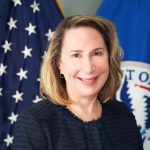 Samantha Medlock is President of Climate Risk Advisors, helping communities and organizations advance equity, sustainability, and resilience. Her career began chasing floods as a local official in Texas Flash Flood Alley—a hands-on experience that still shapes her approach to climate and disaster risk management.
Samantha Medlock is President of Climate Risk Advisors, helping communities and organizations advance equity, sustainability, and resilience. Her career began chasing floods as a local official in Texas Flash Flood Alley—a hands-on experience that still shapes her approach to climate and disaster risk management.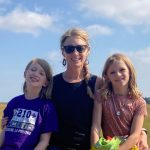
 Arsum is the Senior Adaptation and Coastal Resilience Specialist for the National Wildlife Federation’s Southcentral Region. In this role, she advances climate adaptation efforts, with a focus on nature-based approaches to address the impacts of climate change and extreme events across the Gulf region. She has authored and co-authored numerous publications on climate impact assessments and adaptation solutions. Additionally, she regularly participates in state-based coastal resilience and hazard mitigation planning across the Gulf, collaborating with regional and local stakeholders.
Arsum is the Senior Adaptation and Coastal Resilience Specialist for the National Wildlife Federation’s Southcentral Region. In this role, she advances climate adaptation efforts, with a focus on nature-based approaches to address the impacts of climate change and extreme events across the Gulf region. She has authored and co-authored numerous publications on climate impact assessments and adaptation solutions. Additionally, she regularly participates in state-based coastal resilience and hazard mitigation planning across the Gulf, collaborating with regional and local stakeholders.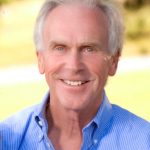 Frank is the former President of the Reinsurance Association of America. Frank currently serves on the Advisory Board of the OECD’s International Network for the Financial Management of Large-Scale Disasters, the RAND Center on Catastrophic Risk Management and Compensation, and the University of Cincinnati’s Carl H. Lindner III Center for Insurance and Risk Management Advisory Board.
Frank is the former President of the Reinsurance Association of America. Frank currently serves on the Advisory Board of the OECD’s International Network for the Financial Management of Large-Scale Disasters, the RAND Center on Catastrophic Risk Management and Compensation, and the University of Cincinnati’s Carl H. Lindner III Center for Insurance and Risk Management Advisory Board.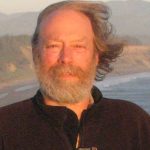 Jim is a multilingual world traveler. Based in Bavaria during the 1970s, Jim spent most of this period in India, Afghanistan and Nepal, where he founded and operated a charitable medical clinic serving Tibetan Refugees. He settled in Oregon in 1983 on a forested ranch in the Umpqua National Forest.
Jim is a multilingual world traveler. Based in Bavaria during the 1970s, Jim spent most of this period in India, Afghanistan and Nepal, where he founded and operated a charitable medical clinic serving Tibetan Refugees. He settled in Oregon in 1983 on a forested ranch in the Umpqua National Forest.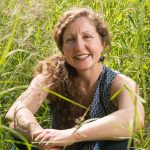 Dr. Micah Hahn is an Associate Professor of Environmental Health in the Institute for Circumpolar Health Studies at the University of Alaska-Anchorage. She received her joint PhD in Epidemiology / Environment and Resources from the University of Wisconsin-Madison and her MPH in Global Environmental Health from Emory University. Subsequently, she was a postdoctoral fellow for the CDC Climate and Health Program, and in this position worked collaboratively with the CDC Division of Vector-borne Diseases and the National Center for Atmospheric Research. Her research focuses on understanding the health impacts of climate change and working with communities to develop locally-relevant adaptation and resilience-building strategies. Dr. Hahn is also on the Management Team of the Alaska Climate Adaptation Science Center.
Dr. Micah Hahn is an Associate Professor of Environmental Health in the Institute for Circumpolar Health Studies at the University of Alaska-Anchorage. She received her joint PhD in Epidemiology / Environment and Resources from the University of Wisconsin-Madison and her MPH in Global Environmental Health from Emory University. Subsequently, she was a postdoctoral fellow for the CDC Climate and Health Program, and in this position worked collaboratively with the CDC Division of Vector-borne Diseases and the National Center for Atmospheric Research. Her research focuses on understanding the health impacts of climate change and working with communities to develop locally-relevant adaptation and resilience-building strategies. Dr. Hahn is also on the Management Team of the Alaska Climate Adaptation Science Center. Michael is a former Founding Principal of Resilient Cities Catalyst, a global non-profit helping cities and their partners tackle their toughest challenges. He is currently the Executive Director of Climate Resilience Academy at the University of Miami.
Michael is a former Founding Principal of Resilient Cities Catalyst, a global non-profit helping cities and their partners tackle their toughest challenges. He is currently the Executive Director of Climate Resilience Academy at the University of Miami.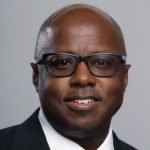 Dr. Quintus Jett is a consultant, educator, and strategist for public causes. He has a doctorate in Organizations & Management from Stanford University, and a two-decade faculty career which spans schools, departments, and programs of business, engineering, liberal studies, divinity, and public and nonprofit management. Following Hurricane Katrina in 2005, Dr. Jett launched a volunteer project in New Orleans, which enlisted residents, students from over a dozen colleges and universities, and hundreds of others to field map the city’s Gentilly district, Lower Ninth Ward, and New Orleans East. Dr. Jett is an innovator in higher education, bridging the divide between academic research and the other priorities of the modern university, including student access and diversity, community engagement, and providing foundations for life-long learning in today’s rapidly changing world.
Dr. Quintus Jett is a consultant, educator, and strategist for public causes. He has a doctorate in Organizations & Management from Stanford University, and a two-decade faculty career which spans schools, departments, and programs of business, engineering, liberal studies, divinity, and public and nonprofit management. Following Hurricane Katrina in 2005, Dr. Jett launched a volunteer project in New Orleans, which enlisted residents, students from over a dozen colleges and universities, and hundreds of others to field map the city’s Gentilly district, Lower Ninth Ward, and New Orleans East. Dr. Jett is an innovator in higher education, bridging the divide between academic research and the other priorities of the modern university, including student access and diversity, community engagement, and providing foundations for life-long learning in today’s rapidly changing world. Scott is Monfort Professor of Atmospheric Science at Colorado State University. He has written about 100 publications in the peer-reviewed climate literature, is a former editor of the Journal of Climate, and served for five years as founding Science Chair of the North American Carbon Program.
Scott is Monfort Professor of Atmospheric Science at Colorado State University. He has written about 100 publications in the peer-reviewed climate literature, is a former editor of the Journal of Climate, and served for five years as founding Science Chair of the North American Carbon Program. Linda has many years of experience in disaster preparedness and resilience. She has been an elected official on the Linn County Iowa Board of Supervisors, Chair of the Metropolitan Planning Organization, the East Central Iowa Council of Governments, the statewide Mental Health Developmental Disability and the Linn County Board of Health. Langston is a former president of the National Association of Counties (2013-2014).
Linda has many years of experience in disaster preparedness and resilience. She has been an elected official on the Linn County Iowa Board of Supervisors, Chair of the Metropolitan Planning Organization, the East Central Iowa Council of Governments, the statewide Mental Health Developmental Disability and the Linn County Board of Health. Langston is a former president of the National Association of Counties (2013-2014).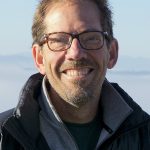 Ken works with families and organizations as a mediator, organizational consultant, trainer and facilitator. Along with his passion for helping people prepare for and reduce climate change, Ken also volunteers as a mediator through Mediation Works and is passionate about supporting youth through mentoring with Boys to Men of Southern Oregon.
Ken works with families and organizations as a mediator, organizational consultant, trainer and facilitator. Along with his passion for helping people prepare for and reduce climate change, Ken also volunteers as a mediator through Mediation Works and is passionate about supporting youth through mentoring with Boys to Men of Southern Oregon. Matthew is a retired high school teacher who was once honored as Oregon High School Social Studies Teacher of the Year. Before his teaching career he was in the restaurant business in Portland. He is also a lawyer who has been a member of the Oregon State Bar Association since 1980.
Matthew is a retired high school teacher who was once honored as Oregon High School Social Studies Teacher of the Year. Before his teaching career he was in the restaurant business in Portland. He is also a lawyer who has been a member of the Oregon State Bar Association since 1980. Andrea is the Resilience Policy Advisor for the North Carolina Office of Recovery and Resiliency. She works across state agencies and with local governments to increase the state’s resilience to the impacts of climate change.
Andrea is the Resilience Policy Advisor for the North Carolina Office of Recovery and Resiliency. She works across state agencies and with local governments to increase the state’s resilience to the impacts of climate change.